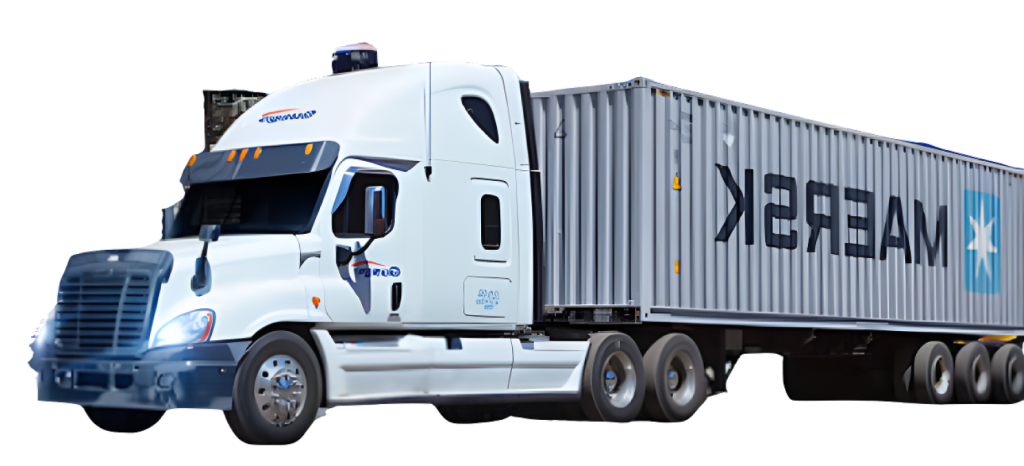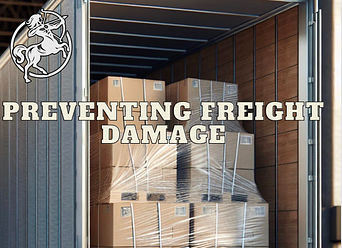STRATEGIES TO ENHANCE YOUR SHIPPING PROCESS
In the ever-evolving world of logistics and supply chain management, preventing freight damage is paramount to maintaining shipping integrity and ensuring customer satisfaction. Accidents may be inevitable, but with the right shipping best practices and packaging tips, you can significantly reduce the risk of damage during transit. By focusing on high-quality packaging materials, implementing rigorous load handling procedures, and partnering with reliable carriers, you can enhance your shipping process and safeguard your goods. As shippers, carriers, and business owners, adopting these strategies will not only protect your freight but also elevate your brand’s reputation in the industry. Let’s dive into effective logistics solutions that will empower you to deliver excellence and build confidence in your shipping operations.
Understanding Freight Damage
Common Causes of Freight Damage
Freight damage often stems from several common causes that can be addressed to enhance shipping integrity. Improper packaging is a leading factor, where inadequate materials fail to provide sufficient protection. Incorrect labeling also plays a significant role, leading to mishandling during transit. Poor load handling practices, such as overloading or uneven weight distribution, can compromise cargo stability. Additionally, using inappropriate or damaged pallets can result in structural failure under the load’s weight. Environmental factors, like extreme temperatures and humidity, can also affect sensitive goods if not accounted for. Finally, human error, including inadequate training and lack of awareness, contributes to mishaps. Recognizing these causes is the first step toward implementing effective logistics solutions that prevent freight damage. By addressing these issues, businesses can reduce incidents and improve overall supply chain management.
Impact on Business Operations
Freight damage has significant implications for business operations, affecting both financial performance and customer relationships. Damaged goods often lead to increased costs due to replacement expenses and additional shipping, impacting profit margins. Moreover, frequent incidents of freight damage can strain relationships with clients, as customers may experience delays or receive inferior products, leading to dissatisfaction and potential loss of business. These disruptions can affect brand reputation, as word-of-mouth and reviews can influence public perception. Operational efficiency is also compromised, as resources may be diverted to handle claims, manage returns, and resolve disputes, detracting from core business activities. Additionally, regulatory compliance issues can arise if damaged goods do not meet industry standards. By understanding the impact of freight damage, companies can prioritize shipping best practices and packaging tips to minimize these challenges, ensuring a smoother and more reliable supply chain management process.
Essential Packaging Tips
Selecting Quality Packaging Materials
Selecting high-quality packaging materials is crucial for effective freight damage prevention. The right materials provide a robust barrier against environmental factors and physical impacts during transit. Begin by assessing the specific needs of your goods; fragile items may require additional padding, while heavier products need sturdier containers. Corrugated boxes, bubble wrap, and foam inserts are staples for protecting various types of cargo. For irregularly shaped items, custom packaging solutions can offer tailored support and protection. Consider the durability and strength of materials, opting for those that can withstand handling and stacking pressures. Additionally, ensure that packaging materials are compatible with your chosen sealing methods to maintain package integrity. Investing in quality materials not only protects your freight but also reflects your brand’s commitment to delivering excellence. By prioritizing this aspect, you enhance shipping best practices and reinforce overall logistics solutions.
Proper Sealing and Labeling Techniques
Proper sealing and labeling are integral components of effective packaging that contribute significantly to freight damage prevention. A well-sealed package protects contents from moisture, dust, and accidental opening during transit. Use strong adhesive tapes, plastic wrap, or strapping to secure packages based on their weight and material. Ensure seals are tight and consistent, with no loose ends that could catch or unravel. Regular inspections during transit can help identify and rectify any seal weaknesses early on.
Labeling is equally important, conveying essential handling instructions to all parties involved in shipping and load handling. Clearly mark packages with labels such as “Fragile,” “Handle with Care,” or “This Side Up” to guide handlers. Use durable, weather-resistant labels to ensure information remains visible and legible throughout the journey. Effective sealing and labeling not only enhance package security but also streamline your supply chain management by reducing misunderstandings and mishandling.
Optimizing Load Handling
Choosing the Right Pallets
Choosing the right pallets is a crucial step in optimizing load handling and preventing freight damage. The right pallet provides a stable foundation that supports the weight and dimensions of the cargo, reducing the risk of tipping or collapse during transit. Opt for standard-sized pallets that are compatible with your shipping and storage systems, as they facilitate smoother handling and stacking. Material selection is also important; wooden pallets offer durability but may require inspection for splinters or damage, while plastic pallets are lightweight and resistant to moisture. Regularly check pallets for signs of wear or damage and replace any that could compromise the load’s integrity. Additionally, ensure that the load is evenly distributed across the pallet to maintain balance. By selecting appropriate pallets, you enhance your shipping best practices and improve overall shipping integrity, contributing to a more reliable and efficient supply chain management process.
Effective Box Stacking Methods
Effective box stacking methods are essential for maintaining load stability and preventing freight damage during transit. Begin by placing the heaviest boxes at the bottom to create a solid base and prevent lighter items from being crushed. Align each box directly over the pallet to ensure even weight distribution without any overhang, which can lead to instability. Use a brick-like pattern, alternating the direction of boxes in each layer, to avoid creating weak columns that can shift or topple. Ensure that there are no gaps between boxes, which could cause movement and lead to damage. Use corner protectors and stretch wrap to secure the entire stack, adding an extra layer of protection against shifting. Regularly check stacked loads for any signs of leaning or instability and adjust as needed. By implementing these techniques, you reinforce shipping best practices, enhance load handling efficiency, and ensure the safe delivery of goods.
Ensuring Shipping Integrity
Conducting Thorough Inspections
Conducting thorough inspections is a key practice in ensuring shipping integrity and minimizing freight damage. Inspections should be carried out at multiple stages of the shipping process, from initial packing to final delivery. Start by examining packaging materials and seals for any defects before loading, ensuring that everything is secure and in good condition. During transit, conduct periodic checks if possible, looking for signs of damage or shifting loads. Upon arrival, inspect the condition of the freight immediately, documenting any issues with photographs and detailed notes. This documentation is crucial for resolving any claims efficiently. Train all personnel involved in handling freight to recognize and report potential problems, fostering a culture of vigilance and responsiveness. Regular inspections not only help identify and address issues early but also build confidence in your logistics solutions, reinforcing supply chain management practices and maintaining excellent service standards for your customers.
Partnering with Reliable Carriers
Partnering with reliable carriers is crucial for maintaining shipping integrity and minimizing freight damage. Reliable carriers have proven track records of safe and timely deliveries, and they adhere to stringent safety standards. When selecting a carrier, thoroughly research their history, customer reviews, and safety measures. Look for carriers that prioritize communication, as this ensures you are informed of any issues or delays promptly. A strong partnership with a carrier that values transparency and accountability can significantly reduce risks associated with freight damage. Additionally, choose carriers that offer tracking capabilities, allowing you to monitor shipments in real-time and respond proactively to any potential disruptions. By collaborating with dependable carriers, you enhance the overall efficiency of your logistics solutions and build trust with your customers, knowing that their goods are in capable hands. This strategic alliance not only protects your freight but also strengthens your brand’s reputation in the competitive landscape of supply chain management.
Advanced Logistics Solutions
Training Staff in Shipping Best Practices
Training staff in shipping best practices is a fundamental aspect of advanced logistics solutions, directly impacting the prevention of freight damage. A well-trained team understands the importance of proper packaging, sealing, and load handling techniques, ensuring each step is executed with care and precision. Provide comprehensive training programs that cover the latest industry standards and practical skills, such as effective box stacking and the use of quality packaging materials. Regular workshops and refresher courses can help keep staff updated on new technologies and methods in supply chain management. Additionally, fostering a culture of continuous improvement encourages employees to identify and share insights on enhancing shipping processes. Empowered with knowledge, your team can proactively address potential issues, reducing the risk of damage and ensuring the integrity of shipments. By investing in staff training, you not only improve operational efficiency but also elevate your brand’s commitment to delivering exceptional service.
Collaborating with Experienced Freight Brokers
Collaborating with experienced freight brokers is a strategic move that can significantly enhance your logistics solutions. Freight brokers have extensive networks and industry knowledge, allowing them to identify the most reliable carriers for your specific needs. They handle the complexities of logistics management, from coordinating shipments to managing documentation, freeing you to focus on core business activities. Experienced brokers also offer insights into cost-effective strategies, optimizing routes and schedules to ensure timely deliveries while minimizing expenses. Additionally, they provide valuable support in addressing challenges, such as freight damage claims or unforeseen disruptions, by leveraging their expertise and connections. By partnering with a seasoned freight broker, you gain access to a wealth of resources and advice that can improve your shipping integrity and overall supply chain management. This collaboration not only streamlines operations but also builds confidence in your ability to deliver goods efficiently and securely to your customers.


